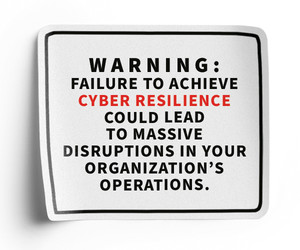As with SOC 1, there are two types of SOC 2 reports, Herbst says.
A Type I report “includes the service organization’s description of its system and the auditor’s opinion on whether the controls are suitably designed to meet the applicable Trust Services Criteria,” she says.
The Type II report looks at the design and operating effectiveness of the controls, usually within six months to a year. It also includes the components of a Type I report and provides the auditor’s opinion on the effectiveness of the controls in operation over the specified period.
RELATED: Assess your compliance strategy.
SOC 1 vs. SOC 2 Reports: What’s the Difference?
There are several differences between SOC 1 and SOC 2 reports. SOC 1 is squarely focused on financial controls and is designed for review by auditors. SOC 2 is focused on operational controls, including data security, and is aimed at operational personnel, such as the IT team.
“SOC 2 is more important to IT leaders,” Herbst says. “It is crucial for IT service providers, and it can be used to show compliance with data security and protection regulations.
If a SOC 1 report uncovers issues, those complications could affect the financial statements of the users, Bialick says, either internally or with a company’s auditors.
By contrast, issues in a SOC 2 report could, for example, result in a company deciding not to use a cybersecurity vendor. The stakes are different, but one report is not necessarily more important or impactful than the other, according to Bialick.
UP NEXT: What is RegTech and how can it help your business?
Why Do You Need These Reports for Compliance and Customer Trust?
Enron and Arthur Andersen were “involved in a massive accounting fraud, partly facilitated by inadequate controls over financial reporting, which led to the creation of SOX,” Herbst says.
“Similarly, WorldCom's improper accounting practices prompted governing boards and regulators to rethink the need for audit assessment and oversight of financial controls. SOC 1 reports can be used to demonstrate SOX compliance.”
SOC 2 reports can be used to demonstrate compliance with regulations such as the Health Insurance Portability and Accountability Act (HIPPA), the Gramm-Leach-Bliley Act (GLBA), the General Data Protection Regulation (GDPR) and the Federal Risk and Authorization Management Program (FedRAMP).
“A consistent framework helps companies understand how they can comply with these and other regulations, enhancing their overall security posture,” Herbst says. SOC 1 and SOC 2 reports also help businesses manage adherence to multiple regulations.
SOC 2 reports are crucial for companies in highly regulated industries, such as banks, Bialick says. “They need to get those so that their third-party risk management program has some teeth and they make sure they’re doing what they need to do to monitor what that third party’s doing on their behalf,” he says.
Maintaining compliance through SOC 1 and SOC 2 is critical to brands’ reputations and their relationships with customers. Many customers reportedly avoid certain brands “due to high-profile data breaches and financial reporting scandals,” Herbst says.
There are too many cautionary tales to count where customer trust was “weakened by the lack of foresight and effort put into protecting them by many corporations, which can lead to customers’ financial health declining and significantly impact their future,” Herbst says.












